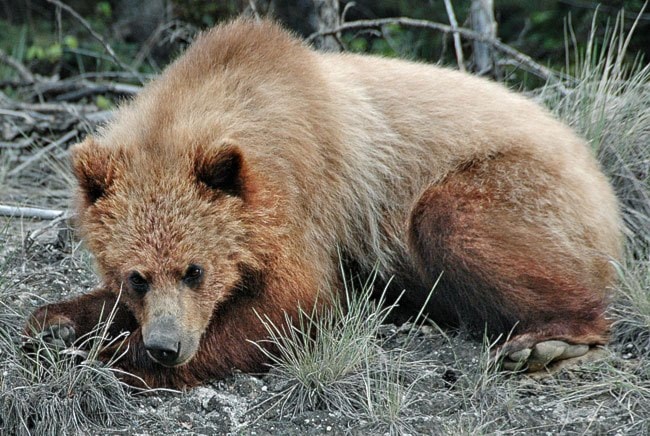As the Yukon Wildlife Management Board prepares to review the controversial practice of roadside hunting, the territory’s First Nation governments face an interesting choice.
Do they issue the usual pronouncements that any new rules would infringe upon their constitutionally-protected right to hunt? Or do they dare think a little more broadly - less about legal entitlements, and more about what might be ethically desirable?
After all, the forthcoming review may only be happening because some members of the Carcross/Tagish First Nation became upset when a grizzly bear they were fond of was shot.
Residents had come to enjoy watching the sow snarfle down honeysuckle along the roadside, and an elder had dubbed the beast the community’s “spirit bear” because of its blonde colouration.
The bear, in turn, had learned to ignore cars as they pulled near so that drivers could gawk. It’s unlikely the bear understood it was in danger when a licensed hunter stepped off the roadside and shot it. That’s hardly sporting, as many have observed, including Chief Danny Cresswell.
But it’s hard to square that position with Cresswell’s opposition to a plan that would have prevented hunters from shooting bears that are similarly accustomed to traffic along nearby Atlin Road. Is it that the only bears that deserve protection are those that his constituents have taken a shining to? Surely not.
Defenders of road hunting say it allows mobility-challenged elders and lower-income residents who can’t afford the gear and time off required for lengthy backcountry trips to still fill their freezers with meat to feed their families. Some sport hunters counter that shooting from the roadside isn’t really hunting, because it removes much of the skill and effort required to pursue an animal in the bush.
It’s hard to imagine this debate being settled any time soon. But maybe residents could still reach a common understanding, at least when it comes to the treatment of bears.
This is an animal that is not exactly prized for its tastiness, unlike, say, moose. If sustenance is the main defence of road hunting, would it be a big deal to ban the hunting of bears along the roadside - with an exception, allowing for the shooting of bears that threaten personal safety?
This suggestion will likely provoke a lot of ranting about rights by both licensed and First Nation hunters. But the reality is that they already face all sorts of restrictions.
Some, like a ban on discharging firearms near homes, are to protect personal safety. Others, like a ban on wasting meat of moose and sheep, recognize the value we put on the critters’ tasty flesh. And still other rules flow from our sense of decency and respect towards animals. You aren’t allowed to harass wildlife on ATVs, for example. And you can’t hunt bears with the help of dogs or bait.
The last example is especially pertinent. Presumably, you aren’t allowed to entice bears with bait because the animal isn’t given a fighting chance to flee. Well, how are the Yukon’s highways much different? Aren’t they, in a sense, one big salad bar for bears? Combine the allure of long expanses of tasty greens with the danger of becoming inured to the racket of traffic, and some bears don’t realize what danger they’re in.
Others will object that bears shouldn’t be treated differently from other animals - that this whole discussion has become polluted by sentimentality. We’d put it a bit differently: some animals are more likely to inspire wonder than others. Bears - those big, hairy, clever, troll-like creatures - are such a creature. As the nature writer Edward Hoagland has observed, bears “appeal to a side of us that is lumbering, churlish and individual. We are touched by their anatomy because it resembles ours, by their piggishness and sleepiness and unsociability with each other, by their very aversion to having anything to do with us except eating our garbage.”
What’s so wrongheaded about acknowledging that we respect a grizzly more than a groundhog? If bears are prized for their strange majesty, rather than their meat, maybe roadside hunting doesn’t confer appropriate respect to such a creature, in the same way that wasting a ram’s meat is disrespectful to the sheep.
Of course, hunting restrictions are complicated by aboriginal rights. The Yukon government may only restrict First Nation hunting for several reasons: conservation concerns, public safety and public health. These carefully circumscribed reasons often create a ceiling for all hunting regulations, because the government wants to be seen treating all hunters equally.
But First Nation governments, as we understand it, are free to set their own rules. That’s why this is a case in which First Nations have a chance to show real leadership on this issue.
The Carcross/Tagish First Nation, which got the ball rolling, could start by making it clear at the upcoming meetings it disapproves of anyone - licensed hunter or First Nation member - shooting bears from the roadside. It could back this up by passing suitable restrictions for its own members, and proposing a more general ban during the territory’s next review of hunting regulations. That would set an example for other communities to follow. (JT)
